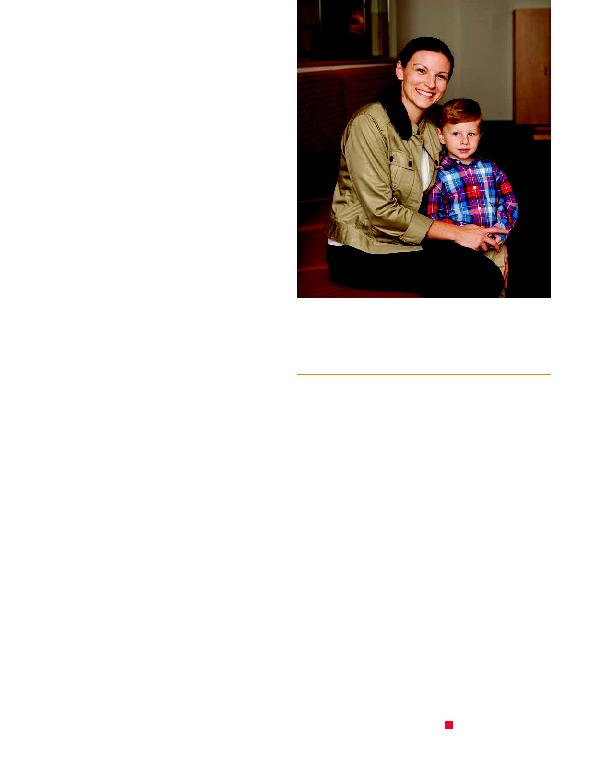
Johnson University Hospital's NICU, in the study, which is still
under way. Preliminary data show that an elevated nitrite level
in EBC in the first week of life may be a predictor of BPD.
MD, assistant professor of pediatrics. The study is determin-
sis in term and preterm infants. Data from this study are being
presented this fall and have led to dosage recommendations.
future for a specific disease also take part in the studies at
ing to track if either had antibodies for type 1 diabetes. "My
brother and sister both have type 1 diabetes," says Ms.
Vastola. "My brother received dual kidney and pancreas
transplants. Not a day went by that I didn't think about how
it wouldn't be uncommon for us to develop the disease."
his mother tested negative. The study was through TrialNet--
an outlet that uses clinical trials to examine the prevention and
early treatment of type 1 diabetes, including screening close
blood relatives of people with the disease.
scientist-physicians to rapidly translate a medical discovery
new preventive treatments for childhood diseases. The ground-
breaking work they are doing can ultimately have an impact on
the future of health care for children. "It is a tribute to Dr. Gaur
says Sally Radovick, MD, professor of pediatrics and senior
associate dean for clinical and translational research. "They are
conducting highly rigorous, difficult studies to answer impor-
tant questions about how to treat childhood diseases." Dr.
Radovick also points out that the center is important as a train-
ing ground. "New investigators are being trained here today so
tomorrow they can be part of developing a new cure, a new
drug, or a new therapy," she says.
who specialize in children take on that additional role of advo-
to play in educating young physicians--to bring them into the
fold and teach them about how we're doing this," says Dr. Gaur.
to do is become part of a National Institutes of Health (NIH)
center for clinical and translational research," says Dr. Gaur.
The center is doing industry-funded studies now. But if it were
many more studies that look at other pathways of treatment.
"Taking a role earlier in the cycle in drug development would
involve us in more groundbreaking studies," she says.
the Child Health Institute of New Jersey positions the center for
success. So much is happening there that dovetails with the stud-
Jersey, and because of the central location of the academic com-
munity, there is a chance for much more collaboration that will
to improve the health of children."
Lindsay Vastola, who participated in a study with her
to determine if they were at risk for developing the disease.